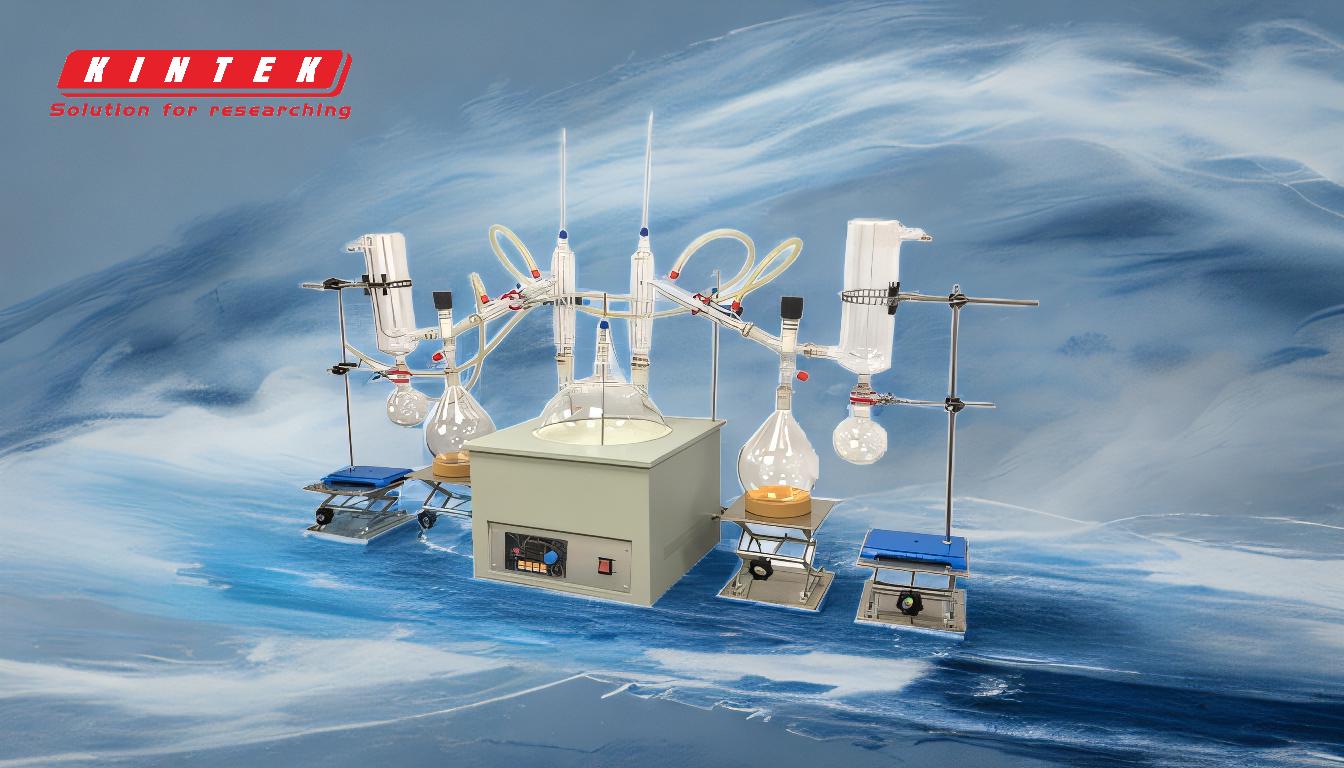Short path distillation is a specialized distillation technique used primarily for separating and purifying high boiling point, heat-sensitive, and easily oxidized materials. It operates at reduced pressures, allowing for lower temperatures and shorter residence times, which minimizes thermal degradation. This method is particularly effective for removing solvents, odors, and impurities from liquids, making it ideal for applications in industries like food, pharmaceuticals, cosmetics, and chemicals. Compared to other distillation methods like reflux or wiped film distillation, short path distillation offers faster throughput, better control over operating parameters, and reduced material loss due to its compact design and minimal use of glassware.
Key Points Explained:

-
Applications of Short Path Distillation:
- High Boiling Point and Heat-Sensitive Materials: Short path distillation is ideal for materials that decompose, oxidize, or polymerize at high temperatures. Examples include natural vitamins, plant extracts, and synthetic oils.
- Solvent Removal: It effectively removes residual solvents from chemical raw materials and products, particularly in food, medicine, and cosmetics.
- Decolorization and Deodorization: The process is widely used for purifying natural intermediates, fatty acids, and their derivatives by removing unwanted colors and odors.
- High-Value Product Purification: It is employed in the preparation of high-boiling process materials and the determination of boiling ranges for heat-sensitive substances.
-
Advantages Over Other Distillation Methods:
- Lower Operating Temperatures: By operating under vacuum, short path distillation reduces the boiling points of compounds, enabling separation at lower temperatures and minimizing thermal damage.
- Short Residence Time: The rapid processing time reduces the risk of degradation for heat-sensitive materials.
- Selective Separation: It can selectively vaporize target products while removing impurities, allowing for multi-level separation of more than two substances.
- Physical Process: The fractionation is purely physical, protecting the separated substances from contamination or chemical alteration.
-
Comparison with Other Distillation Techniques:
- Reflux Distillation: Unlike reflux distillation, which involves continuous condensation and re-evaporation, short path distillation has a simpler setup and faster throughput.
- Wiped Film Distillation: While wiped film distillation also operates under vacuum, short path distillation uses less glassware, reducing material loss and simplifying the process.
- General Laboratory Distillation: Short path distillation is more compact and efficient, making it suitable for high-value materials where product loss is costly.
-
Industrial and Economic Significance:
- Cost-Effectiveness: The reduced material loss and efficient processing make short path distillation economically viable for high-value products.
- Versatility: It is widely used across industries for applications ranging from vitamin concentration to solvent removal and purification of natural extracts.
- Gentle Processing: The gentle separation process ensures the integrity of heat-sensitive and easily oxidized materials, making it indispensable in industries like pharmaceuticals and cosmetics.
-
Operational Principles:
- Vacuum Operation: A vacuum pump lowers the pressure, reducing the boiling points of compounds and enabling efficient distillation of heavier molecules.
- Compact Design: The use of minimal glassware and a short path between the evaporator and condenser reduces material loss and simplifies maintenance.
- Controlled Parameters: Operators have better control over temperature, pressure, and residence time, ensuring precise separation and purification.
In summary, short path distillation is a highly efficient and versatile technique for separating and purifying high boiling point, heat-sensitive, and easily oxidized materials. Its advantages over other distillation methods, such as lower operating temperatures, shorter residence times, and reduced material loss, make it a preferred choice in industries requiring gentle and precise processing of valuable substances.
Summary Table:
| Key Aspect | Description |
|---|---|
| Applications | Purification of high boiling point, heat-sensitive, and easily oxidized materials. |
| Advantages | Lower operating temperatures, short residence time, reduced material loss. |
| Comparison | Faster throughput and simpler setup than reflux or wiped film distillation. |
| Industrial Use | Widely used in food, pharmaceuticals, cosmetics, and chemical industries. |
| Operational Principles | Vacuum operation, compact design, and precise control over parameters. |
Learn how short path distillation can optimize your processes—contact our experts today!










